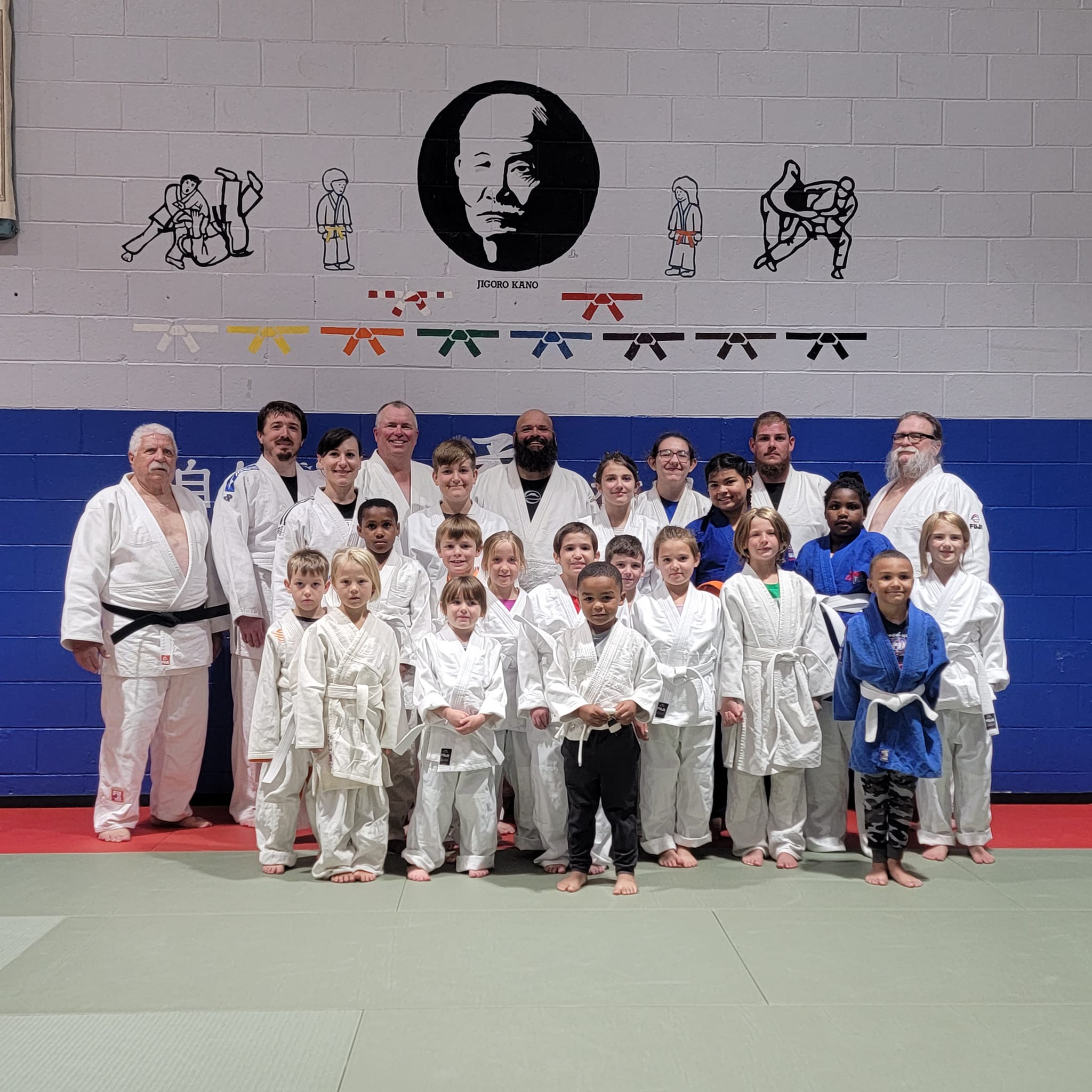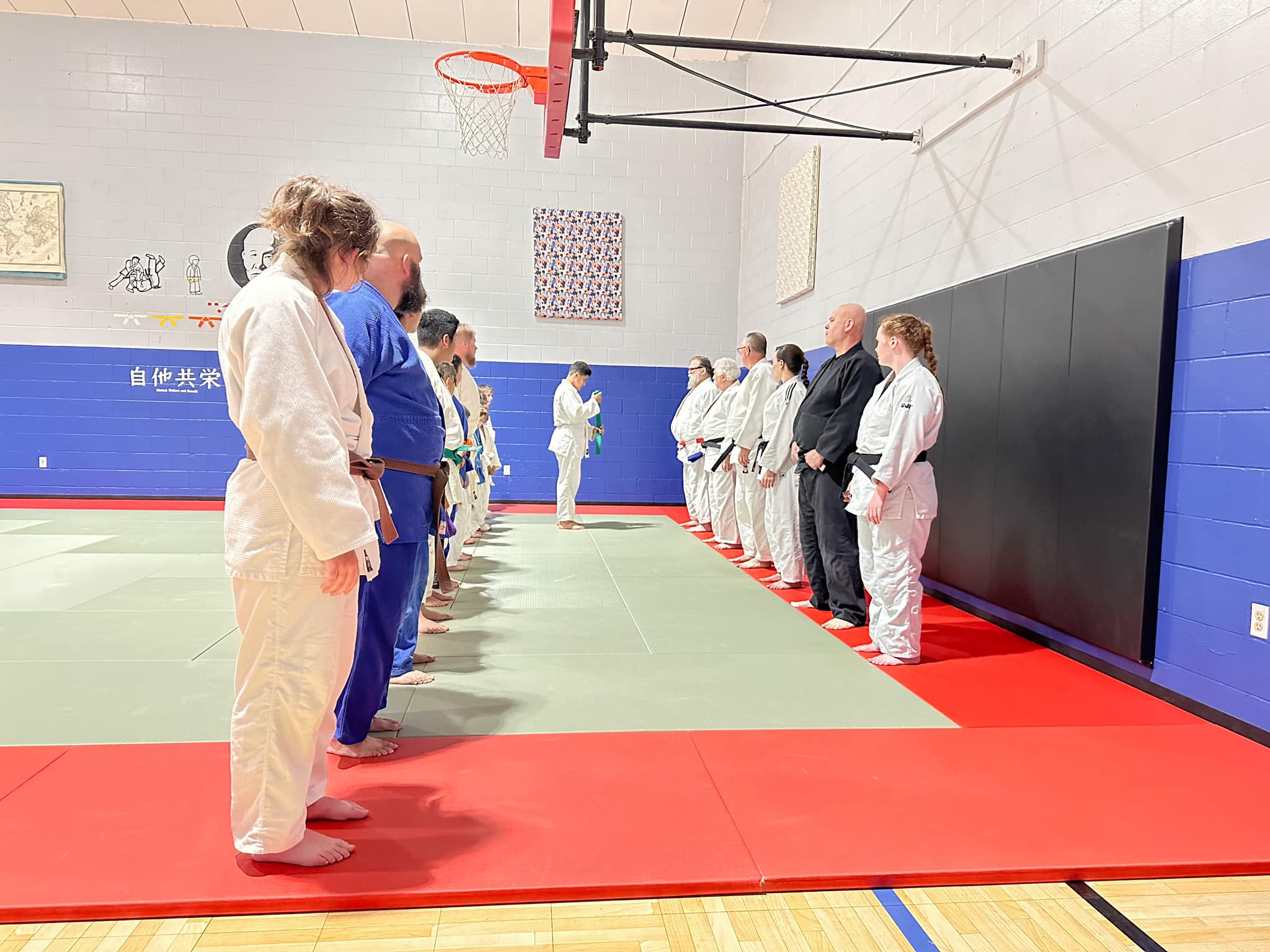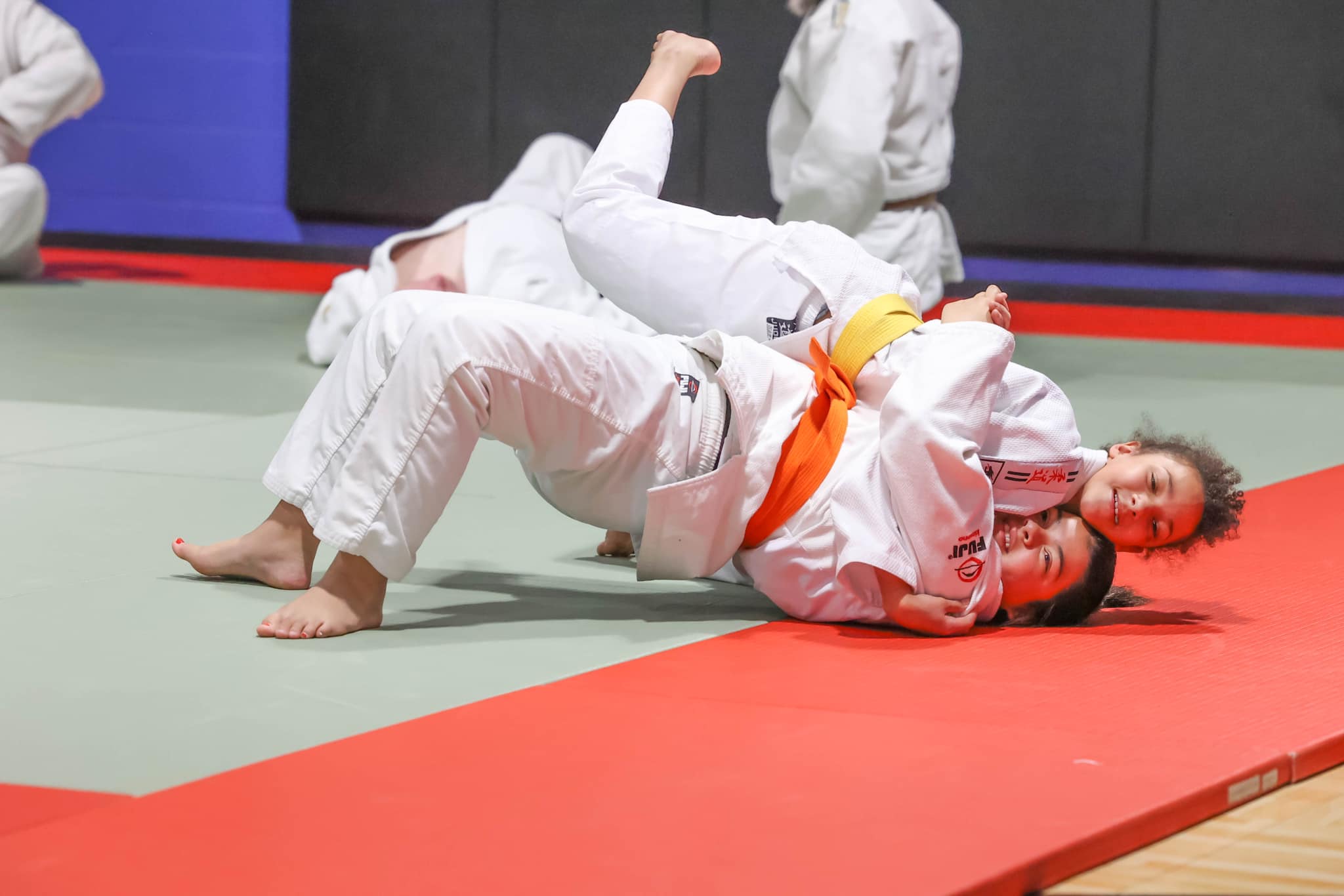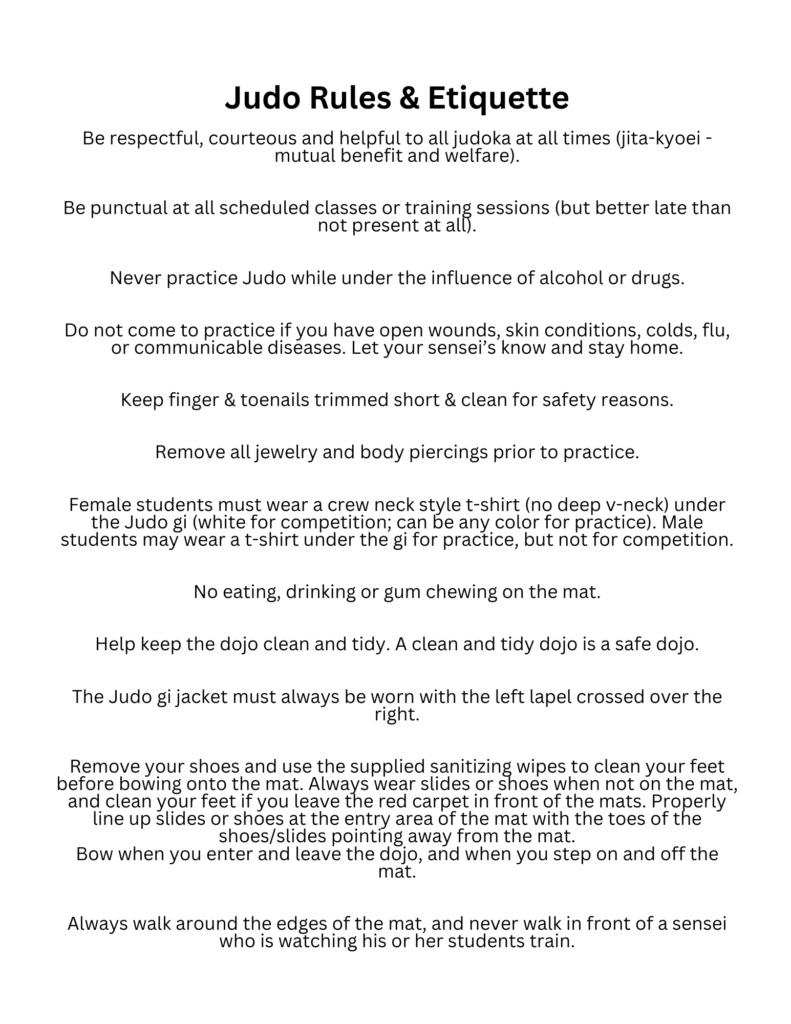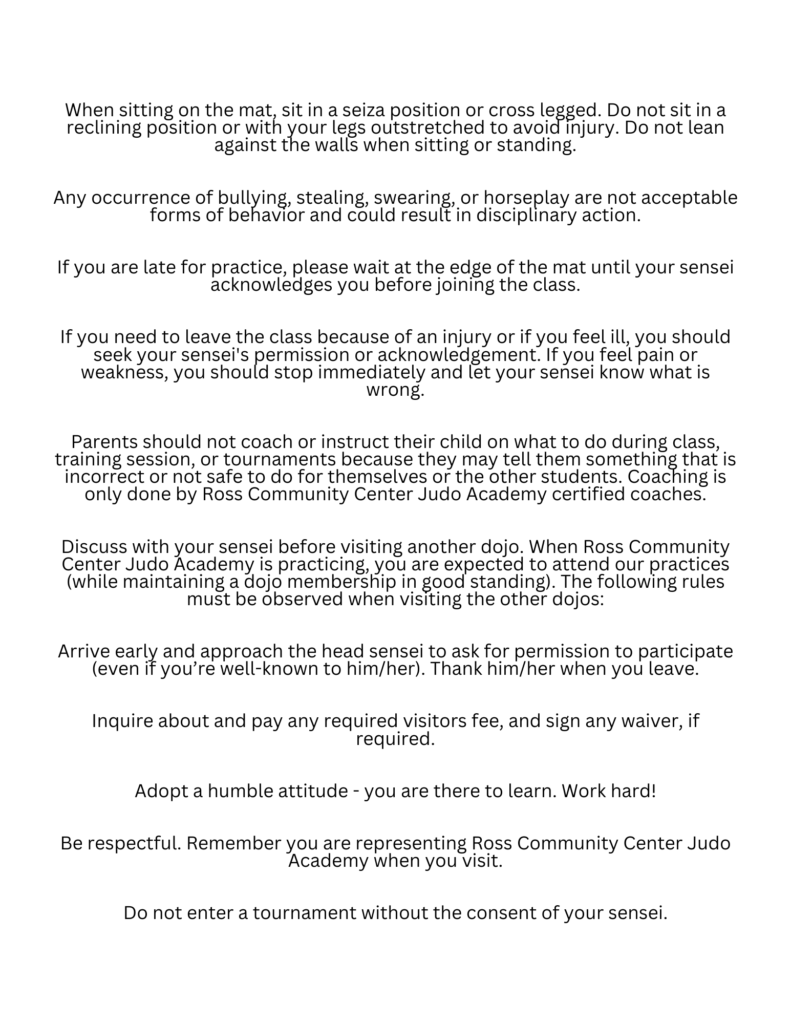Rank Requirements:
1. Rokyu – yellow belt
—- one yellow tip – dojo rank
—- two yellow tip – dojo rank
—- yellow belt – dojo rank
2. Gokyu – orange belt
—- one orange tip – dojo rank
—- two orange tip – dojo rank
—- orange belt – dojo rank
3. Yonkyu – green belt
—- one green tip – dojo rank
—- two green tip – dojo rank
—- green belt – dojo rank
4. Sankyu – 3rd degree brown / blue belt (junior rank)
5. Nikyu – 2nd degree brown belt
6. Ikkyu – 1st degree brown belt / purple belt (junior rank)
–Kodokan Go Kyo No Waza – official 67 throws of the Kodokan
–Nage No Kata
USJF Recommendations for Promotion
IJI Dan Promotion Guide-IJI Black Belt promotion requirements, adopted July 2010
Study aids:
– – study guide #1
– – study guide #2
–Japanese Terminology
–Nage No Kata Notes

